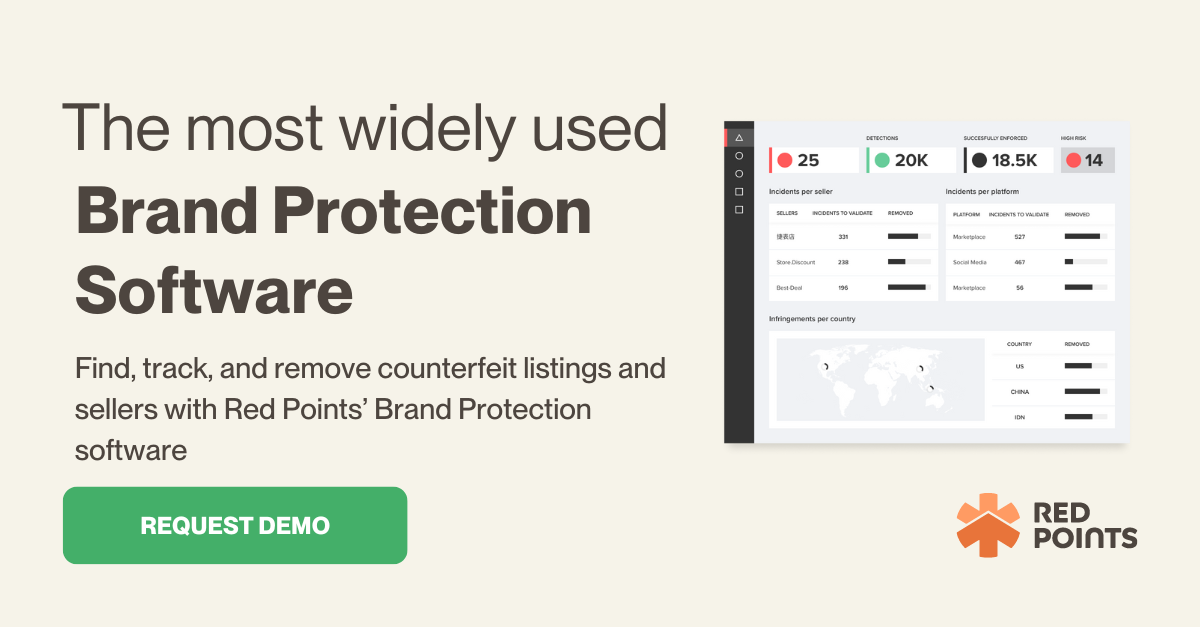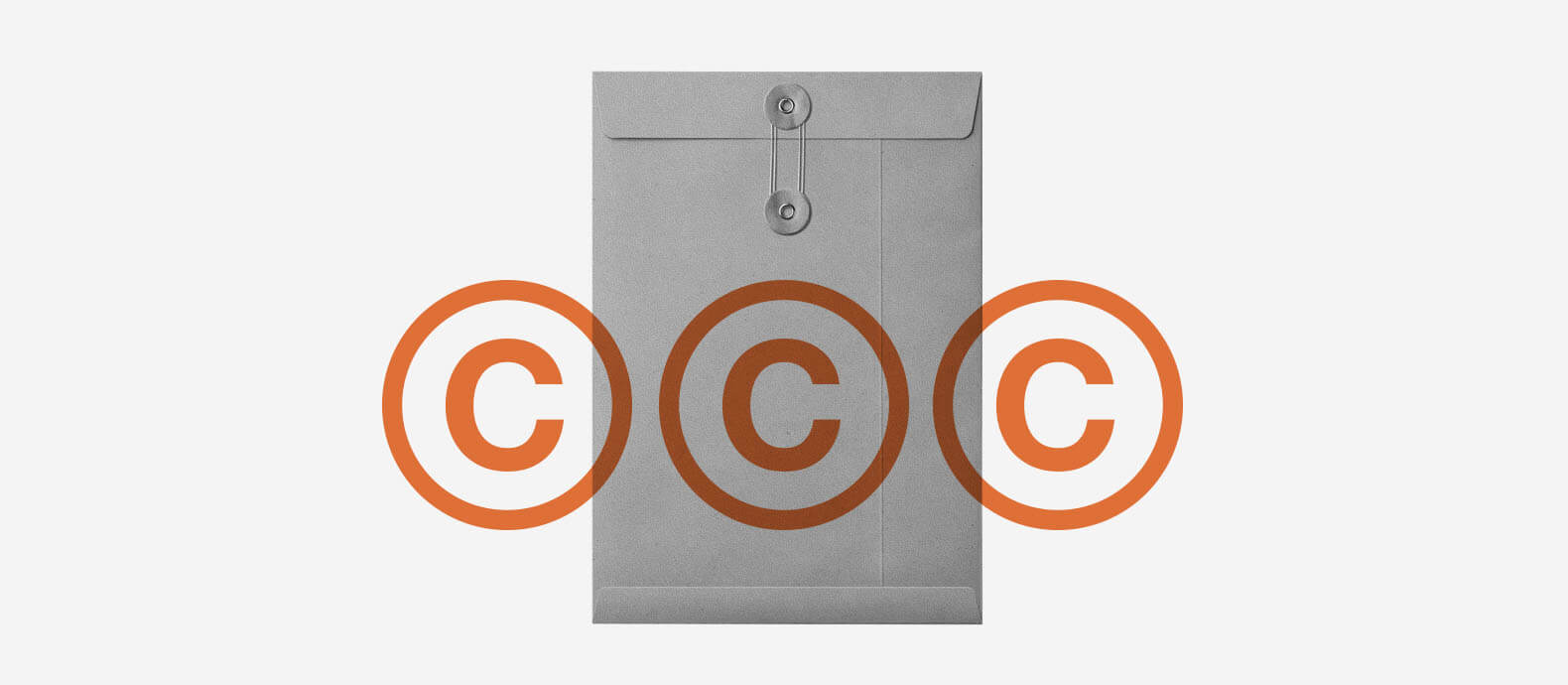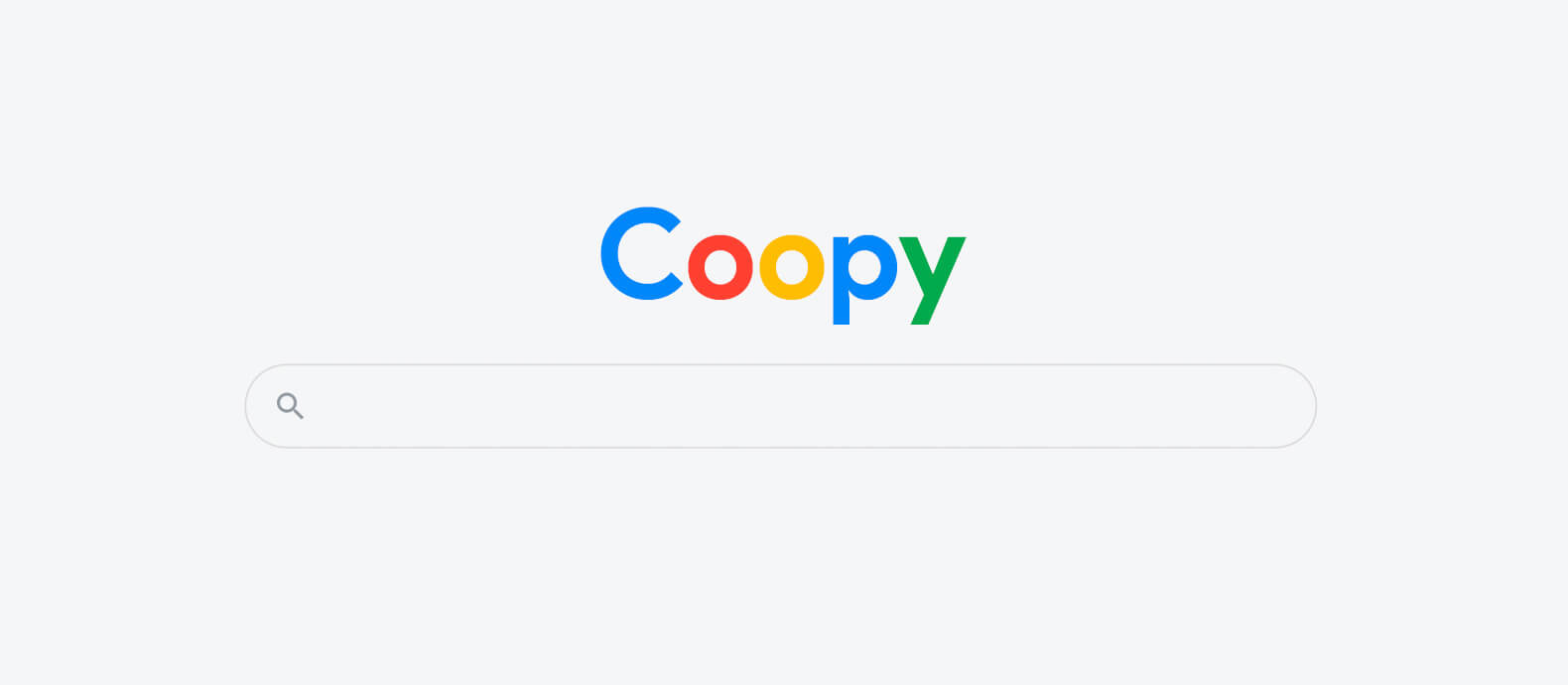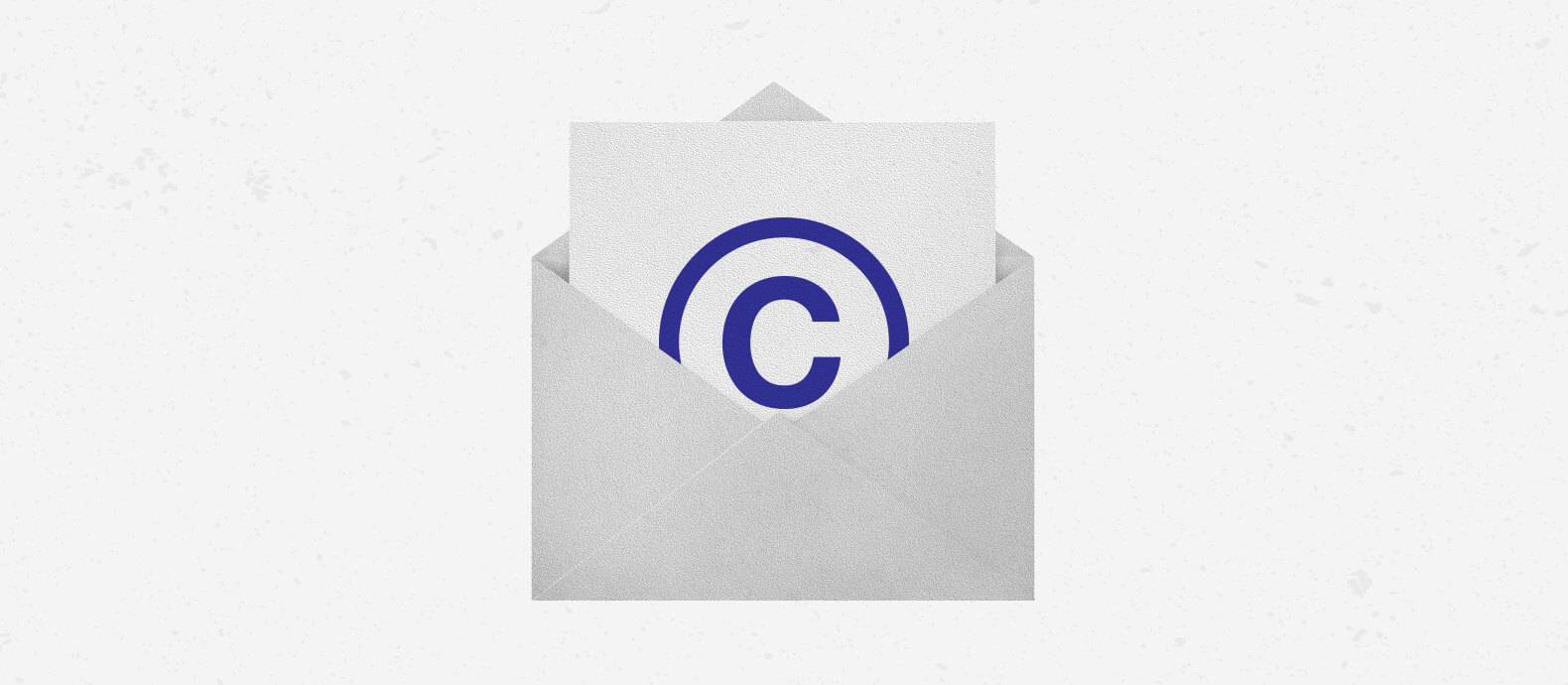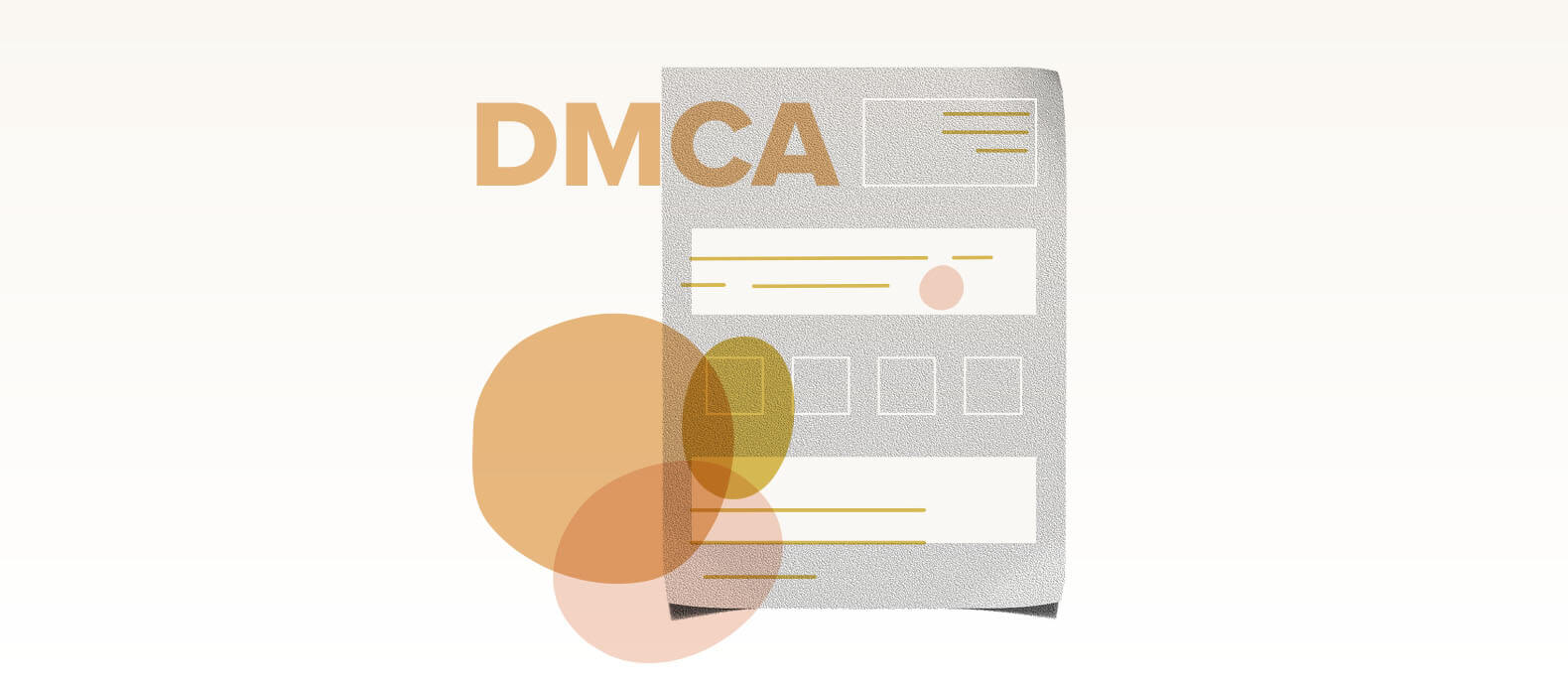Learning that your copyrighted material has been used or appropriated is frustrating and upsetting for anyone. Whether you’re an independent business, an individual designer, or an established brand, unlawful use of your copyrights represents a threat to your revenue, and also to your audience’s trust and loyalty.
As the digital world continues to evolve and grow, and as more people and businesses alike become reliant on the internet, copyright infringements have evolved exponentially. AI, deep fakes, and increasingly more advanced technologies make it easier for infringers to use and appropriate copyrighted content – even mapping trends and seeking out the designs that will be most beneficial for them to replicate.
It’s a worry for almost any brand or creator that operates online. But there are ways to combat copyright infringements. In this guide, we’ll explain how to identify and report infringements, so you’ll understand how and when to protect your brand, your reputation, and your work.

What’s a copyright infringement?
Copyrights exist to protect the ownership of unique works, such as photographs, manuscripts, and web copy. They also restrict unauthorized copies of the work.
A copyright infringement occurs when someone makes a reproduction of a copyright-protected work without consent from the creator.
Copyright infringement is against the law, but it doesn’t stop it from happening en masse, especially online. In many cases, committing a copyright violation is as easy as copying and pasting content and re-uploading it online.
What is an example of copyright infringement?
There are various ways scammers and counterfeiters infringe on copyright online. Whether the intent of the infringer is malicious or unintentional, having unauthorized copies of a protected work online can ruin its value and defraud the owner.
The most common examples of copyright infringement to watch out for include:
Stolen photographs and graphics
Original photographs are protected under copyright law. But they are some of the easiest forms of content to replicate. Stolen pictures and graphics are uploaded by thousands of users on social media platforms like Instagram and Facebook each day.
Brand owners should keep their eyes peeled for infringements of their photos, as they can be used in scam ads and spoof websites. One of the major negative side effects of this is that viewers may not realize that the work has been used unlawfully, and could come to associate your brand or work with unfavorable websites or adverts.
Text infringement
There are large and small-scale forms of text infringement, that range from uploading entire manuscripts to stealing copies from a website or social media account. Any content you write and post online can be copied and infringed upon online, which is especially dangerous in scam cases. Scammers can copy text from existing brand’s websites to create spoof websites and impersonation accounts that defraud consumers.
Illegal movie & music streaming
Scammers upload copyrighted music and movies that they do not have ownership of, and make them available for free on illegal sites. This is a huge problem for the music and movie industries, which lose millions in revenue every year due to illegal streaming. Scammers don’t just target big names, either. Even independent creators who upload their music or films online can have their content stolen.
Why is it important to remove copyright infringements?
When copyright infringements occur on such a large scale online, some question whether it’s worth trying to stop the problem. But for content creators and business owners who rely on their unique work for revenue and audience connection, it is essential to remove any copyright infringements that occur.
Copyright infringements can have a devastating impact on content owners, including:
Diminished value
For many original creations, like works of art, originality, and scarcity increase the value of the creation. If there are suddenly multiple copies of a piece of art that is supposed to be one-of-a-kind, it is likely to diminish its value.
Lost revenue
Scammers typically infringe on intellectual property for two main reasons: to impersonate the brand with and aim to defraud consumers or to sell counterfeit goods. In either case, their efforts divert customers away from the original brand and bring them to their site. Any sales they make are revenue stolen directly from the brand or creator who made the original content that is being infringed upon.
Damaged brand reputation
Consumers can be easily fooled by a scam ad, counterfeit product, or other schemes of copyright infringement used online. Because scammers typically use infringements to impersonate the brands they’re stealing from, the original brand is often blamed. Having these infringements on the market can quickly damage your reputation as a brand or creator and make your loyal customers lose faith in you.
What things are not covered by copyright laws?
Not everything is protected by copyright law, and brand owners and content creators need to know what won’t be enforceable. Content that isn’t covered by copyright laws include:
Ideas & Non-tangible works
To be protected under copyright, a creation has to be tangible. This means it must exist in a consumable way. For this reason, ideas are not protected by copyright.
A photograph, for example, is copyright protected, but not the concept of the photo, like its location or subject. The same goes for a novel; the actual manuscript is protected, but the plot is an idea that is legal for anyone to use and make their own.
Trademarkable content
Slogans, brand names, and other brand identifiers cannot be protected under copyright law. This doesn’t mean they can’t be protected, however. Brand owners can register a business trademark for this content to ensure they can enforce their ownership.
Content in the public domain
Copyrighted content is typically protected for a creator’s entire life, plus an additional 70 years. If the content was published before this, then it falls into public domain. Content within the public domain can be replicated by anyone, free of consequence.
Along with this content that isn’t protected by copyright, there are instances where sometimes even protected content can be replicated, so long as it falls under fair use.
What constitutes fair use of copyright material?
Fair use law “promotes the freedom of expression” and permits the unlicensed replication of copyrighted content, if certain criteria are met (Copyright.gov).
To qualify as being fair use, a creator typically has to be providing commentary on the protected content or transforming it within a new creation. A common example of this is when a content creator uses a clip of a movie or video while reviewing it online.
So how can you tell if someone is infringing on your content, or if it falls within fair use? In general, if someone is making money off of the replicated content, it’s likely an infringement. If you see this occurring, you must report the copyright violation and work to get it taken down.
How to report a copyright infringement?
If you identify a copyright infringement, it’s important to work quickly to get it removed. This is because the longer it remains online, the more the risk increases of defrauding your customers, stealing your revenue, and devaluing your content.
To report and take down a copyright infringement, follow these steps:
Step 1: Gather proof of the infringement
Having evidence of the specific copyright infringement will be important as you go forward with getting it removed. This proof should include screenshots, links to the infringement, and any other information you can collect (the more the better.)
During this time, you should also find any official registrations you have for your content, as this will make it easier to prove your ownership.
Step 2: Send a DMCA takedown notice
Once you have gathered the proper evidence, you can contact the infringer. A DMCA takedown will serve as a notice to the offender that they have infringed. It will also notify them that legal action will be taken if the content is not removed.
File a DMCA takedown and send the official notice to the offender, with a deadline to remove the content.
Step 3: Report the infringement to all applicable sources
Finally, you will want to report the infringement to as many authorities as applicable. Most marketplaces and social media platforms have their own reporting tools you can use to do this.
You can also report copyright infringements to web hosts, search domains like Google, and federal and local authorities. This expansive approach will increase your chances of getting the infringement removed.
Where should you report a copyright infringement?
Reporting a copyright infringement to the appropriate authorities will ensure it is dealt with in a timely manner. You don’t need to report it on every single platform around, so where should you focus your energy when trying to take down an infringement?
Authorities
First, you should report the infringement to your local government authority. You can report the infringement to the U.S. government here, and many local municipalities will have their own reporting systems. Keep in mind that this reporting will serve more as a record rather than work to take down the infringement.
Web Hosts
If you find the infringement on a personal website, you can report it to the web host. In some cases, there may be a form to fill out, or you may simply have to send them a copy of the DMCA takedown.
Platforms
If you find an infringement on an Ecommerce marketplace or social media platform, report it directly to the platform. Sites like Amazon, Shopify, Facebook, and Instagram all have systems to easily report copyright infringements.
Search Engines
Search engines are a good place to report copyright infringement, especially if you are having trouble getting it removed. Even if you can’t get the scammer, or the website host, to take down the infringing content, you can still ensure consumers can’t find it. Reporting a copyright infringement to Google can help de-index it from the platform, meaning it won’t show up in searches.
How to report copyright infringements on various platforms
Each platform or marketplace has its own form and process for reporting copyright infringement. Use the following links to find the right form for the platform where you have identified infringement.
Report copyright infringement on Facebook
Facebook’s copyright reporting form is fairly simple and should only take you a few minutes to fill out. You will be given multiple choices that you can choose to fit your specific information, as seen below.
You’ll then be asked for additional contact information, links to your own content, and links to the content you are reporting. Finally, you will have to sign a declaration statement and submit your report.
Once you’ve submitted your report, it can take anywhere from a few days to two weeks to be approved.
Report copyright infringement on Instagram
It can be tricky to determine whether or not a breach of copyright has occurred on Instagram, where re-uploads of viral content are popular. Before reporting, you can use their reporting guide, which will ensure you don’t waste your time reporting permitted content.
Since Facebook owns Instagram, the process for reporting copyright infringements on the two platforms is nearly identical. You will have to use Instagram’s copyright reporting form, which is the same as Facebook’s form.
Again, getting your report approved can happen quickly, within a few days, but can also take up to two weeks.
The rise of TikTok is also seeing more and more scam accounts launching. Find out how to report fakes on the platform here.
Report copyright infringement on Shopify
To report a copyright infringement on Shopify, you will have to log in to your store account. You will be able to access the form after you have done this.
Once you have confirmed that infringement has occurred using Shopify’s copyright and trademark guide, you can use the platform’s online form to report the infringement.
You will be asked for your contact and business information, as well as links to the store and content infringing on your intellectual property. Wait times can vary once you’ve submitted your report, but it typically takes about a week for the infringing content to be removed.
Report copyright infringement on Amazon
The Amazon report infringement form is fairly similar to the others on the list. Navigate there and scroll down until you see the boxes to begin filling in with your information.
Along with your contact info, you will also have to provide the brand name and information of the infringer, as well as product details. You then have a choice of providing a “written description of the copyrighted work,” or simply a link to the work. Providing the link is probably your best chance of having your approval go quickly.
Typically, Amazon works a bit faster than other platforms to take down infringements. You should expect to hear back within 1-3 days after sending in your report.
Other platforms that often fall foul of scammers selling counterfeit products and infringing copyrights include DHGate and Alibaba.
How can brand owners prevent future copyright infringements?
By the time a customer reports that they have been defrauded by a counterfeit item, it’s likely that some level of damage has already been done. Taking a proactive approach to brand protection is the best way to stop infringements before they spiral out of control and damage your business.
Brand owners can enhance their brand protection and proactively prevent these attacks by monitoring for copyright infringements online. Monitoring social media, Ecommerce marketplaces, and personal websites is essential to identify and report copyright infringement as fast as possible.
But for most brands, keeping a close monitor on every possible channel for infringement is simply too big a task to accomplish alone. Luckily, an automated infringement monitoring software like Red Points can help. This investment offers a scalable brand protection solution that proactively identifies and reports breaches of copyright online before they can damage your brand.
What’s next
Copyright infringements steal your revenue and tarnish your brand reputation, no matter which platforms they are occurring on. It’s essential to know how to report copyright infringements as quickly as possible to protect your property, customers, and business.
Manually reporting copyright infringements isn’t scalable for brands already losing revenue to scammers online. Red Points can help automate the process of copyright detection and removal to streamline this process.
Our automated system monitors a wide range of platforms, regularly scanning for listings or designs that could infringe upon your copyrights. It gives you peace of mind, saves you time, and even delivers valuable data insights that you can use to bolster your brand protection strategy.
Want to learn more about how Red Points can protect your brand? Request a demo today.
